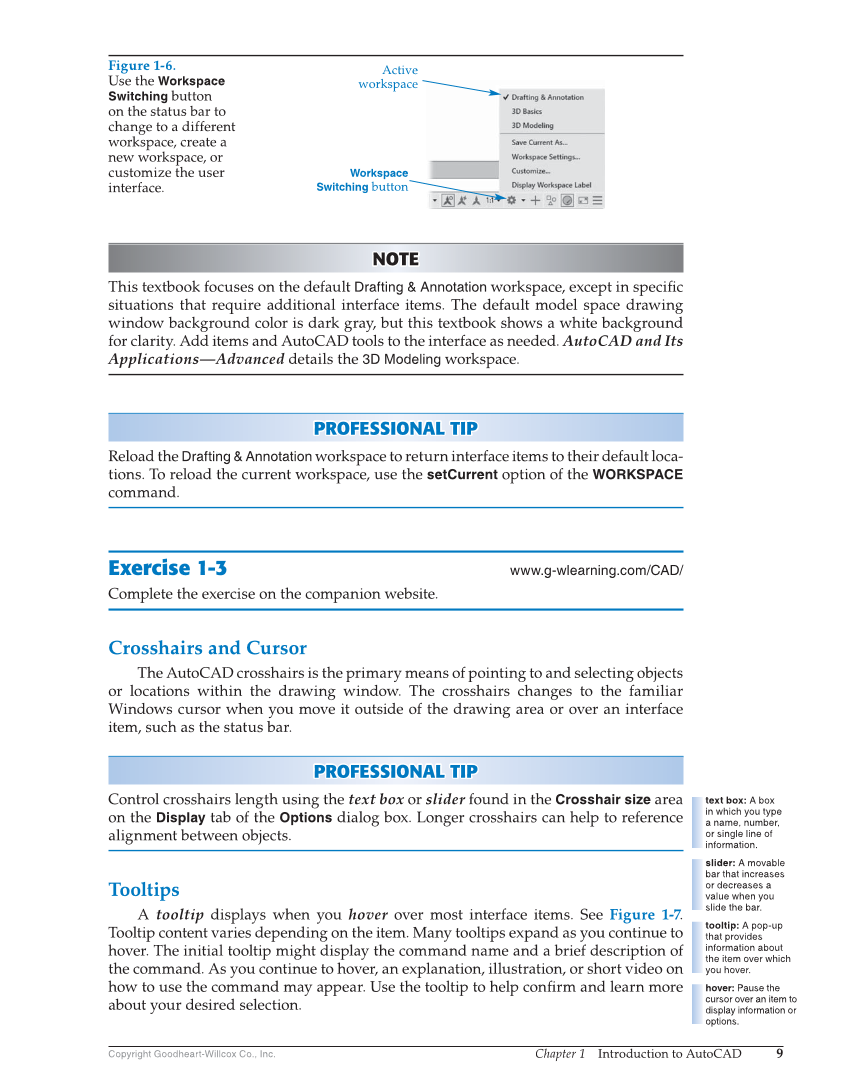Chapter 1 Introduction to AutoCAD 9 Copyright Goodheart-Willcox Co., Inc. NOTE NOTE This textbook focuses on the default Drafting & Annotation workspace, except in specifi c situations that require additional interface items. The default model space drawing window background color is dark gray, but this textbook shows a white background for clarity. Add items and AutoCAD tools to the interface as needed. AutoCAD and Its Applications—Advanced details the 3D Modeling workspace. PROFESSIONAL TIP P R OFESSIONAL TIP Reload the Drafting & Annotation workspace to return interface items to their default loca- tions. To reload the current workspace, use the setCurrent option of the WORKSPACE command. Exercise 1-3 www.g-wlearning.com/CAD/ Complete the exercise on the companion website. Crosshairs and Cursor The AutoCAD crosshairs is the primary means of pointing to and selecting objects or locations within the drawing window. The crosshairs changes to the familiar Windows cursor when you move it outside of the drawing area or over an interface item, such as the status bar. PROFESSIONAL TIP P R OFESSIONAL TIP Control crosshairs length using the text box or slider found in the Crosshair size area on the Display tab of the Options dialog box. Longer crosshairs can help to reference alignment between objects. Tooltips A tooltip displays when you hover over most interface items. See Figure 1-7. Tooltip content varies depending on the item. Many tooltips expand as you continue to hover. The initial tooltip might display the command name and a brief description of the command. As you continue to hover, an explanation, illustration, or short video on how to use the command may appear. Use the tooltip to help confi rm and learn more about your desired selection. text box: A box in which you type a name, number, or single line of information. slider: A movable bar that increases or decreases a value when you slide the bar. tooltip: A pop-up that provides information about the item over which you hover. hover: Pause the cursor over an item to display information or options. Figure 1-6. Use the Workspace Switching button on the status bar to change to a different workspace, create a new workspace, or customize the user interface. Active workspace Workspace Switching button
